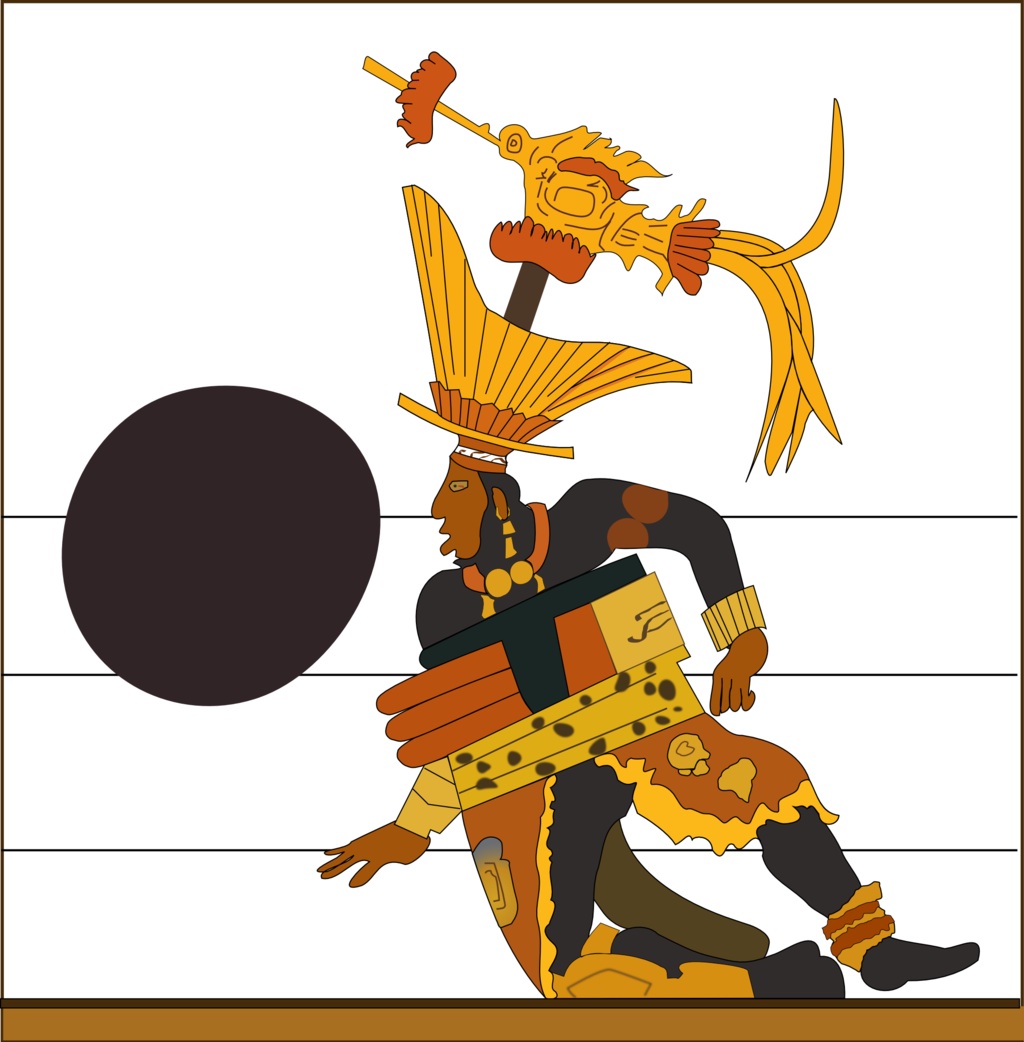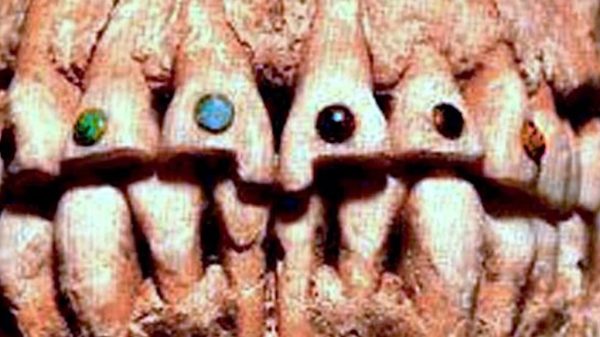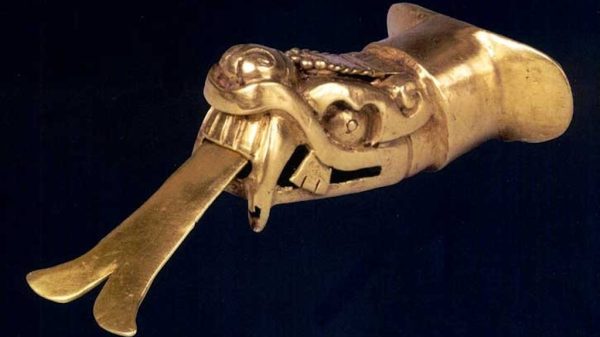Dating back at least to the Olmecs, this sport – Ōllamaliztli in Nahuatl, Pok a Tok to the Mayans, Tlachtli to the Aztecs, and in Spanish “El juego de la pelota” – is the most ancient team sport still currently played, where it is today referred to as Ulama. Although both the rules and the outcomes of the game evolved over time, the game is characterized by its fast paced play, physical exertion and marathon duration. Central to the game was of course the court, which, although it varied greatly in size, remained consistent in general shape through the 2700 year history of the sport. A masonry structure with a long central alley lined on both sides with vertical and slanted walls emblazoned with iconic imagery of jaguars and, of course, ritual sacrifice. There may or may not be a hoop on opposite sides of the alley, with the goal being to knock the ball through. But this feat was rarely achieved, and most scholars agree that games were won or lost on a point system, with various rings stationed around the court being the primary targets, and points being subtracted for letting the ball bounce or land off court.

Ballcout at Uaxatun. credit Renato Villalobos. CC3.0

Ring at Chichen Itza, 6 meters (20 ft) off the ground, making it an extremely difficult target. Credit Kare Thor Olsen. CC3.0
The ball itself was rubber – which was made from a latex mixture derived from several local plants – and about the size of a basketball, but much heavier, up to about 6 lb/3 kg. While the exact rules of the game are murky at best, and, as mentioned earlier, changed over time, they can be more or less summarized as such: the ball was not to touch the court; players on teams of usually 2 to 4 had to keep the ball in the air through a combination of hits from the hip, torso, elbows, and head; use of the hands or feet to hit the ball was prohibited; and in games that lasted multiple hours or even days, players tried to score points by hitting the opposing team’s rings or get the ball through the small ringed hoop – but because the hoop was small and sometimes up to 6 meters above the court, this event was exceedingly rare. Therefore, although getting the ball through the ring was a surefire victory, most games were won through points accrued through hitting other rings, and when a team lost points by letting the ball bounce or get hit off court.

Sinaloan ulama player outfit similar to Aztec players. Credt Manuel Aguilar-Moreno. CC2.5
Given the extreme stakes at hand, the weight of the ball and the masonry court, brutal injuries or even deaths sustained during play were common. Modern players of Ulama are constantly bruised, and in its extreme forms taken to by the Aztecs players, suffered deep bruising through repeated trauma from ball hits or diving on the masonry courts. Although some players – what we might call “professionals” – were outfitted with protective girdles and yokes, the players that were not given such protection – captives, slaves – were in for a rough go of it. Direct hits to the head could cause death, and bruises became so bad that they required lancing.

Sak Ch’een 8th century (size of ball likely exaggerated) CC3.0
The Mesoamerican ball game was imbued with various shifting cultural aspects over its history. The game as a proxy for war is an obvious connotation, and it has been suggested that the game was actually used to settle boundary disputes in lieu of military action. Ritual decapitation became increasingly prominent in the Aztec strain of the game, so much so that it has been suggested that decapitated heads were used in the game as balls.

Sacrificed (decapitated) Ball Player. public domain
While the Mesoamerican ball game in the extreme form taken to by the Aztecs may appear savage, barbaric and overtly violent to our eyes, there is right now a multi-billion dollar sport that hails from a modern dominating, warlike culture. And, although vaulted players of said sport reap potentially millions of dollars, the abuse that their bodies accrue – especially repeated head trauma – spell out a no less lethal, albeit more painfully slow and isolating, death than the players of the Mesoamerican ball game suffered: chronic traumatic encephalopathy, made famous by several notable football players committing suicide due to its delayed but harrowing onset of early dementia, aggression, depression and decline of cognitive ability.

Chronic Traumatic Brain Encephalopathy. Ccredit Boston University CC4.0
I might take the quick decapitation as the more humane way to go out…














